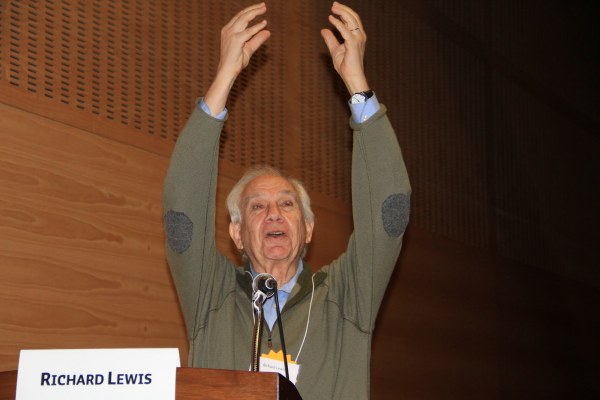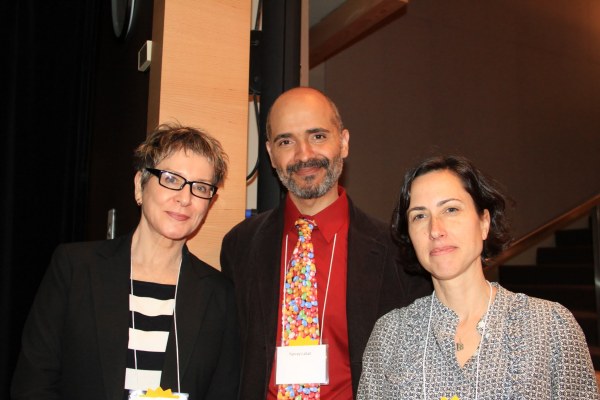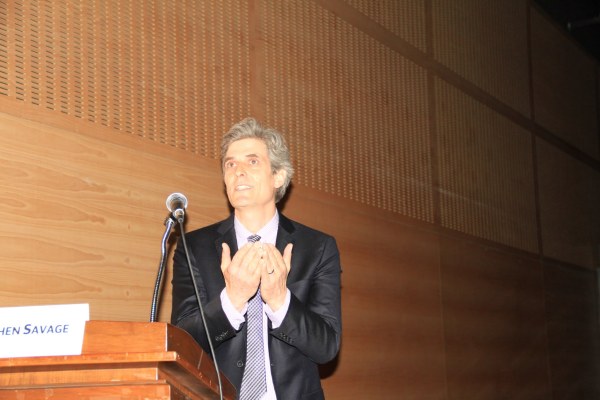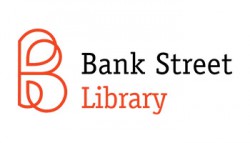Play and Imagination
On Saturday, April 12, 2014, the Bank Street College of Education hosted its third Writers Lab mini-conference, with a focus on “Play and Imagination” in childhood.
“In a child’s mind, there’s no division between play, imagination and wonder–they’re intricately involved in all three,” began Richard Lewis, founder of The Touchstone Center. “As teachers, we don’t so much teach as listen.” He kicked off the morning with a captivating keynote speech connecting fact and imagination. Using the words of New York City schoolchildren, with whom he’s collaborated in the public schools through the Touchstone Center’s 45-year history, he demonstrated how their imaginations have connected with the world around them, ignited by the rising sun, the blossoming of spring, a feather as evidence of a bird’s recent flight.
A panel of Bank Street’s recent Cook Prize honorees, moderated by Mollie Welsh Kruger, member of the Bank Street College Graduate Faculty and co-chair of the Children’s Book Committee, discussed where curiosity could take us as writers, artists, researchers and readers. Lela Nargi (The Honey Bee Man) spoke of how, in her 25 years as a journalist, her science articles often “began with a conversation” and that her daughter’s curiosity often sparked Nargi’s own curiosity. Working on her ecomazes led Roxie Munro (Busy Builders) to her researching and understanding of ecosystems. As she put together Busy Builders, she had to narrow down from 25-30 bugs to 20, keeping in mind geographic diversity and venomous versus nonvenomous. Yancey Labat, the artist of How Many Jelly Beans?, spoke of the challenges of representing accurately the growing amounts of jelly beans, building to 1 million. His wife, author Andrea Menotti, felt strongly that they keep the focus simple–concentrating on counting, rather than taking on volume.
“Each gutter is an opportunity to create a mechanism across the fold,” instructed Becca Zerkin, a member of Matthew Reinhart’s pop-up studio, and also of the Children’s Book Committee, who led conference attendees in a pop-up project. With a simple snip–at an angle or straight across the fold–Zerkin showed us how to build opportunities to imagine three-dimensional environments.
Stephen Savage enlightened us about “visual grammar” using his book Where’s Walrus? in his closing keynote speech. He spoke of the text and illustrations as “the harmony and melody of the song” and pointed to silent movies as “the original wordless books.” Where’s Walrus? is wordless, but he showed us how, through close-ups, color, and diagonal lines to indicate a chase, he creates a nonverbal subtext for his tusked hero. And, since the book is a search for Walrus, the importance of pattern: “When the pattern is broken, you create surprise.”
–Jennifer M. Brown
(Many thanks to photographer Cheryl Simon and videographer Daniel DeFreese!)




Thanks for a wonderful event. We all felt honored to be there. And we learned how to make basic pop-up books, too!